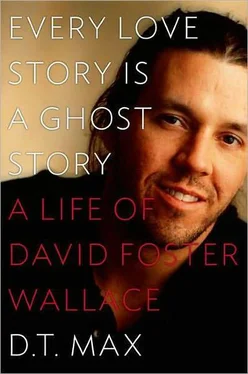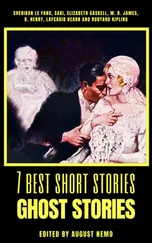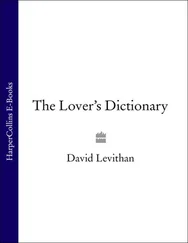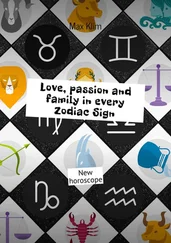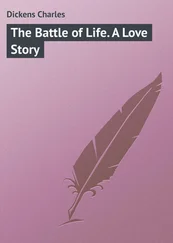But changes in technology did not really affect whether one responded to Infinite Jest . Video cartridges were the vector of the plot, but they were not responsible for the sadness at its core. What the novel was about was how to feel connected in your own life, and that was still the great struggle. The Web might offer a different hope of escape from the self, but actually escaping was no less futile, as those who spent their time trying discovered. (It was named the “Web” for good reason.) Among the early champions of Infinite Jest , in fact, were the technologically elite, the rising generation of information and technology experts, programmers, and webmasters, real-life counterparts to the student engineer in Infinite Jest who takes his work break on the roof of the “great hollow brain-frame,” of the MIT Union. These readers immediately responded to a writer who saw the afternoon light through the lens of a new reality, as they did:
The P.M. was moving fast from a chilly noon cloud-cover into blue autumn glory, but in the first set it was still very cold, the sun still pale and seeming to flutter as if poorly wired. 13
Reading Infinite Jest was an act of protest against the future they were creating, the one Wallace had imagined in “Here and There,” a world “of the cold, the new, the right, the truly and spotlessly here.” Yet paradoxically the Web made Infinite Jest an easier read. The cognitive jumps in its pages felt less extreme after a generation of Internet surfing and blogging than they had when the book was published. Wallace’s distinctive prose with its rapid ascents and descents in diction and its seemingly endless appetite for expansion, at once erudite and ungainly, yearning for home without ever finding it, turned out to be perfect for a new medium. The Web seemed made for multiple conjunctions at the opening of sentences.
In time these early Internet users took up Wallace for their fan communities too, a transition that particularly discomfited him (though to be fair anything that reinforced the masonry of the statue did). When in March 2003 a member of Wallace-l told Wallace about their email list at a taping of a reading for The Next American Essay , a compilation of creative nonfiction edited by John D’Agata that Wallace had contributed to, his response was, “You know, for emotional reasons and sanity I have to pretend this doesn’t exist.” Yet efforts like it did exist, and their influence looped back into the world of conventional magazines. Chad Harbach, an editor at N+1 , a literary magazine founded in Brooklyn in 2004, declared in its first issue that “David Foster Wallace’s 1996 opus now looks like the central American novel of the past thirty years, a dense star for lesser work to orbit.” It was their Catcher in the Rye , a Catcher in the Rye for people who had read The Catcher in the Rye in school. By 2006, 150,000 copies of Infinite Jest had been sold and the book continued to sell steadily.
Wallace was becoming a staple in the academy too. In 2003, Marshall Boswell’s Understanding David Foster Wallace came out, the first book dedicated to Wallace’s oeuvre. The same year Stephen Burn’s book-length guide to Infinite Jest was published. Scholars began examining his works’ dense allusions. They focused on narcissism, irony, and recursion. The influence of Derrida, De Man, Heidegger, and, of course, Wittgenstein were looked at. Some of the early efforts had an improvisatory feel, as academics tried to find the appropriate approach to a writer who represented an era in literature when there was as yet no secondary source material. Another problem was that Wallace himself had laid out such a clear explanation of his theoretical aims. That Wallace had abandoned literary theory a decade before opened the question of the theory by which he rejected theory, if he had in fact rejected theory and not just subsumed it. Infinite Jest ’s debt to other literature was perhaps an easier way to start, from Gödel, Escher, Bach to Tristram Shandy and, of course, Hamlet . In 2007, Timothy Jacobs, a Canadian scholar, wrote a thoughtful paper marking out the links between The Brothers Karamazov and Infinite Jest . The parallels are multiple, both being novels about a father and his three sons. Orin Incandenza corresponds to Dmitry Karamazov, the nihilistic oldest brother; Hal is Ivan; and Mario is the stand-in for Alyosha Karamazov, the simple, almost holy youngest son, with his “foolish grin” and refusal to lie. Like “the good old Brothers K,” as Wallace called Dostoevsky’s novel, Infinite Jest counterposes sincerity and faith against moral lassitude. Both eschew stylish irony to make a single point: faith matters.
Attention to his past work, though, was not going to help Wallace out of his current hole; in fact it would dig him into it more deeply. Stuck on The Pale King , he eyed the output of his contemporaries with envy: Franzen, Eggers, and especially Vollmann, who won the National Book Award for his novel Europe Central in 2005. “I’m in awe of his productivity,” Wallace emailed Franzen in November of that year. “How many hours a day does this guy work?” He felt the field he had once dominated getting more and more crowded. Single-entendre principles, hijinks sentences, prose at once formal and street-smart were no longer his alone. He read Rick Moody’s The Diviners , a maximalist novel set in Hollywood, thought it good in part but tired in style, and swore to Franzen he would never write like that again. But how, then, should he write? When Franzen told him he was having trouble with his own work, Wallace wrote to commiserate (or perhaps outdo):
I too have lots of stuff that’s been jostling in line inside for years for a book. And many, many pages written, then either tossed or put in a sealed box. What’s missing is some…thing. It may be a connection between the problem of writing it and of being alive. That doesn’t feel quite true for me, though. Mine is more like the whole thing is a tornado that won’t hold still long enough for me to see what’s useful and what isn’t, which tends to lead to the idea that I’ll have to write a 5,000 page manuscript and then winnow it by 90 %, the very idea of which makes something in me wither and get really interested in my cuticle, or the angle of the light outside. I’ve brooded and brooded about all this till my brooder is sore. Maybe the answer is simply that to do what I want to do would take more effort than I am willing to put in. Which would be a bleak reality indeed, if that’s all it is?
“DeLillo’s thing,” he added to Franzen, “about the unwritten book following Gray around like a malformed fetus dribbling cerebrospinal fluid from its mouth gets apter all the time. I am dead becalmed — stuff literally goes right into the wastebasket after being torn from the top of the legal pad.” More than a year later he was no farther along, writing to Franzen: “I go back and forth between (a) working to assembl[e] a big enough sample to take an advance, and (b) recoiling in despair, thinking that if I had your integrity I’d pitch everything and start over.”
Complicating things was that he and Green were having so much fun. They listened to U2 and old Simon and Garfunkel CDs and loved IZ’s rendition of “Over the Rainbow.” For his forty-fourth birthday, in February 2006, Green got her husband a bootleg of the new season of The Wire . That Christmas they had spent with his family on Stinson Beach, Wallace with a pair of binoculars watching out for sharks as Karen swam far from shore. Franzen persuaded Green and Wallace to go to Capri in the summer for a writer’s festival, where Wallace discovered octopus and went to parties at sponsors’ houses. He seemed, to Franzen’s eyes, as “available” as he had ever been. Afterward, Wallace took a detour to Wimbledon to start a piece on Roger Federer for the New York Times Magazine . He loved sitting courtside and watching Federer play. When Wallace insisted on using the serial comma, which was against the rules of the Times’ s style handbook, the issue was settled in his favor by the executive editor Bill Keller.
Читать дальше
